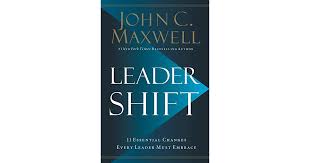
Become the kind of leader that people would follow voluntarily; even if you had no title or position. – Brian Tracy
In her column, Ask Marilyn, Marilyn vos Savant gave an interesting perspective on contentment. One reader wrote in about a unique experiment she had conducted after being dissatisfied that her neighbor’s yard looked better than her own. She did what few have done and walked next door to look back at her own grass. When she stood in her neighbor’s yard, the grass in her own yard now looked greener than theirs so she asked, “Why does this occur?”
Marilyn replied, “The grass looks greener on the other side of the fence because you’re not close enough to see the dirt.” Most of the time, things look better for others simply because we can’t see their dirt.
I remember my days as a young leader looking up to some of those larger than life people who influenced me. On one occasion, I remember meeting one such person and came away quite demoralized. I had looked up to this person, but up close there was a lot of dirt. Words like haughty, aloof, and arrogant come to mind when I recall the encounter.
That experience was more than three decades ago and since then I’ve come to set more realistic expectations. I do this not as a defense mechanism so as not to ever be disappointed again but as a way of embracing my humanity as a leader and recognizing it in others. Any of us can have a bad day and none of us want to be defined by one bad encounter. Do you?
It’s easy to see the successes in others and get caught up in the trap of comparing ourselves – our success, our following, our accomplishments up against those more successful. And when we do, we see greener grass elsewhere.
Seeing the greener grass on the other side is nothing new. We all have those moments when we think it’s time to go graze there. Here are a couple of thoughts to consider when your mind drifts in that direction.
Don’t envy other people’s dirt
Lyrics to an old Garth Brooks song say, “Sometimes I thank God for unanswered prayers.” In leadership, you see what you think is the greener grass – a career move, a promotion, a better opportunity, etc., and you are tempted to jump the fence. And then in some providential way you come to discover that what you thought was a great move would have been a disaster had you taken it.
Focus on being the best leader you can be right where you are. You can only make things greener if you stay and work it. Click To TweetTend to your own dirt
Back in my high school days, I worked in a garden center. In the winter months when business was slow, we prepared for spring. We would build greenhouses and we would pot thousands of roses.
But before we could begin the potting process we would have to prepare the soil. This would include all of the necessary ingredients including fertilizers – even manure, mixed together. It was smelly, dirty, and hard work. Not to mention the constant cuts from the thorns even while wearing gloves.
In leadership, just as in potting roses, you have to tend your soil, and sometimes the work is dirty and unpleasant. But the reward is worth it. Click To TweetSo before you are envious of the green grass you think you see elsewhere, stop and consider that there’s a lot of dirt you don’t see. And regardless of how bad you think you have it, your responsibility is to bloom where you are planted.
Ultimately, yes, one day the time will be right, the new calling will be a good fit, and moving on will be the right thing to do. But it’s almost never a good move when done out of jealousy or frustration. In many of those cases, it’s just exchanging one pile of dirt and manure for another.
Final Thoughts
Gandhi said, “You must be the change you wish to see in the world.” And this is true in leadership. Create the change – create the greener grass, right where you are. And don’t forget that with all the green grass comes a good bit of dirt.
©2020 Doug Dickerson










 Recently, I was reading back through
Recently, I was reading back through 